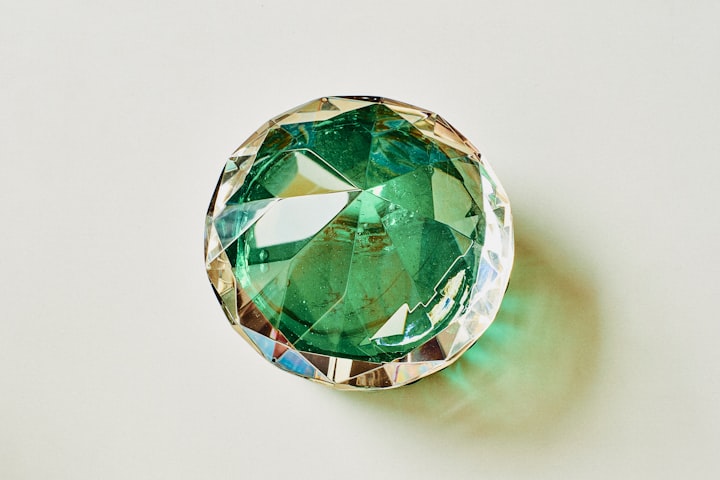Diamonds are a Girls Best Friend.
How the synthetic diamonds are produced.

A good slogan was created in 1947 that has stuck around for decades. After many unsuccessful attempts to produce a great slogan for De Beers, Frances Gerety, a copywriter at an advertising agency, before heading home scrawled ‘A diamond is forever’ on the bottom of a picture of two honeymooning lovers. It had humble beginnings, but the campaign became the most recognized slogan of the 20th century, and ninety percent of Americans know it. ‘A Diamond is forever’ became the official slogan of De Beers.
Diamonds have been tagged as a girl’s best friend when Marilyn Monroe sang the song ‘Diamonds are girl’s best friend’ in the 1950s from the film ‘Gentlemen Prefer Blondes’. Even now we keep hearing this phrase. Have you ever thought why? Every woman loves to receive a diamond. Diamonds have been formed over billions of years, there is so much history involved in them. They hold value for girls and the diamonds don’t wear off or get scratched.
Diamond jewelry has always represented high-class and refined taste. Women have been wearing diamonds for centuries because they have been associated with success, power, and classiness. When a woman wears diamond pieces on special occasion’s people notice them. A sparkling necklace with diamonds can leave people breathless.
Diamonds have been romanticized by most girls while growing up. They dream of the day when they would own their first diamond. Many girls imagine a diamond engagement ring that can win their hearts.
Since 1477, diamonds have been the most important material symbolism of love. It was for the first time a diamond ring was part of the big question for Mary of Burgundy by Archduke Maxmillian of Austria. This is the reason why diamonds have been part of almost every woman’s dream engagement ring.
It is indeed valuable and precious. It also denotes the importance of money when it comes to love. When you give your daughter a precious diamond ring or necklace that she can wear, you will be at peace that she would be financially secure. They can be a part of her legacy that she leaves for her children.
Are you aware that there are synthetic diamonds available in the world?
Synthetic diamond refers to a laboratory-grown diamond or cultured diamond. It is made of the same material as natural diamonds; pure carbon crystallized in an isotropic 3D form.
After it was discovered that diamond was pure carbon, many attempts were made to convert cheap forms of carbon into diamond. The earliest successes were reported by James Hannay in 1879 and Henri Moissan in 1893. Their method involved heating charcoal up to 3500°C with iron inside a carbon crucible in a furnace. After this Ruff and Hershey also claimed success but other experimenters were unable to reproduce their synthesis.
In 1941, an agreement was made between General Electric, Norton, and Carborundum companies to further develop diamond synthesis. They were able to heat carbon to 3000°C under the pressure of 3.5 gigapascals for few seconds. Soon the World War II disrupted the research process.
After the Second World War in 1951 at the Schenectady Laboratories of GE, a diamond group was formed with Francis Bundy, H.M. Strong, and later joined by Tracy Hall. The group made improvements on the work by Percy Bridgeman who received Nobel Prize for his work in 1946.
Hall achieved the first commercially successful synthesis of diamond on December 16, 1954. His breakthrough was using a belt press which was capable of producing pressures above 10Gpa and temperatures above 2000°C. The largest diamond produced was 0.15 mm across and was too small for jewelry, but usable in industrial abrasives. He was the first person to grow a synthetic diamond with a reproducible, verifiable, and well-documented process.
Synthetic gem-quality diamond crystals were first produced in 1970 by GE and reported in 1971. The first gem-quality stones were yellow to brown in color due to contamination with nitrogen. Removing nitrogen from the process by adding aluminum or titanium produced colorless white stones while removing nitrogen and adding Boron produced blue ones.
How are diamonds manufactured in the Lab?
Diamonds extracted from the earth are believed to have been formed 1–3 billion years ago. They were formed from carbon dioxide being exposed to extreme temperatures and extreme pressure. These conditions were found 90 miles below the earth’s surface. Once formed these diamonds were moved from the Earth’s core to its crust by volcanic explosions.
The process of making diamonds in a lab is much more efficient. The two most commonly used methods in lab-grown diamonds are- High Pressure-High Temperature (HPHT) and Chemical Vapor Deposition (CVD).
HPHT
In the HPHT method of diamond production, a small diamond seed is placed into a piece of carbon. Then either using a belt press, cubic press, or a split sphere press, the carbon is pressurized to approximately 1.5 million pounds per square inch. The carbon is also exposed to temperatures over 2700 Fahrenheit. The pressure and heat begin to melt the carbon, forming a diamond around the initial diamond. The newly formed diamond is now cooled.
CVD (Chemical Vapor Deposition)
Like the HPHT process above, in the CVD process, a small diamond seed is used. The seed is placed inside a sealed chamber that is heated over 1400 Fahrenheit and filled with carbon-rich gases (methane or hydrogen). These gases are then ionized into plasma using a technology similar to lasers or microwaves.
The technology breaks down the molecular bond of the gas. Once the molecular bond is broken, pure carbon begins to stick to the seed and a new diamond is formed. Additional treatments may be used (heat or irradiation) to enhance or change the diamond’s color.
Detonation of explosives
Diamond nanocrystals (5 nm in diameter) can be formed by detonating certain carbon-containing explosives in a metal chamber. These nanocrystals are called ‘detonation nanodiamonds.’ During the explosion, the pressure and temperature in the chamber become high enough to convert the carbon of the explosives into a diamond.
Ultrasound Cavitation
Micron-sized diamond crystals can be synthesized from a suspension of graphite in organic liquid at atmospheric pressure and room temperature using ultrasonic cavitation. The diamond yield is about 10% of the initial graphite weight. The technique has only been reported by two research groups and there is a potential for improvement in the efficiency of the process.
Properties of Diamond
The absence of crystal flaws is considered to be the most important quality of a diamond. Purity and highly crystalline nature make diamonds transparent and clear, whereas their hardness, luster (optical dispersion), and chemical stability make them a popular gemstone. High thermal conductivity is also important for technical applications. High optical dispersion is an intrinsic property of diamonds; their other properties depend on how they are created.
Applications of Diamond
Cutting Tools
The industrial applications of synthetic diamonds have been associated with their hardness which makes diamond the ideal material for machine tools and cutting tools. Diamond is known to be the hardest naturally occurring material and can be used to polish, cut, or wear any material. This ability is utilized in diamond-tipped drill bits, saws, and the use of diamond as an abrasive.
Thermal conductor
Pure diamond has high thermal conductivity but negligible electrical conductivity. This comes in handy in electronics where a diamond is used as a heat sink for high-power laser diamonds, laser arrays, and high-power transistors. Efficient heat dissipation prolongs the lifetime of these electronic devices. In semiconductor technology, synthetic diamond heat spreaders prevent silicon from overheating.
Optical material
Diamond is hard, chemically inert, has high thermal conductivity and a low coefficient of thermal expansion. Therefore synthetic diamond is starting to replace zinc selenide as the output window of high power CO2 lasers and gyrotron.
Benefits of Buying Natural diamonds
The benefits of buying a natural diamond are:
· The natural diamond’s value will generally increase over time with inflation. The rarer it is, the better the investment with perfect clarity and color.
· Natural diamonds have been purchased and traded for hundreds of years as against lab diamonds, making their pricing stable over time.
· Natural diamonds that may appreciate more quickly in value have fancy colors like canary yellow or the rare red color. Pink and blue diamonds are also considered good for value appreciation.
Benefits of Lab diamonds
The benefits of buying lab diamonds are:
· There is a shorter supply chain involved in reaching the hands of the consumers. This reduces the cost for the consumer, so Lab diamonds are a cost-effective alternative to natural diamonds.
· Lab-grown diamond is safer for the environment as there is less pollution due to mining and scrubbing involved in natural diamonds. Mining for diamonds has a tremendous impact on the environment. Between 88,000 and 176,000 pounds of dirt must be sifted through to find a single 1-carat diamond
· Lab diamonds can be manufactured in a much shorter period than natural diamonds which can take hundreds of years to grow. People have many options to choose from.
· One of the major benefits of lab-grown diamonds is that you know exactly where the diamond originated. Many traditional mined diamonds come from conflict regions. This has raised both ethical and humanitarian concerns.
The diamond industry has been linked to child labor, poor working conditions, human rights violations, and funding armed conflicts. With lab-grown diamonds, you can have peace of mind knowing your diamond wasn’t involved in the blood diamond trade.
How long does it take to grow a lab diamond?
While the natural diamond takes many years to be found and mined, lab-grown diamonds normally take less than a month to grow. White diamonds take the longest time to grow, taking more than two weeks for a 1 carat diamond. Yellow and blue diamonds take 5–10 days to grow. If the growth process is rushed the crystal can fracture.
Identifying Natural and Lab Diamonds
· Thermal conductivity- Natural diamonds conduct and react to heat while some lab diamonds do not.
· Lab diamonds are often made colorless so they look very white to capture light and increase sparkle.
· Price tells everything. If they are prices too less; up to 75% less than the price of natural diamond it is a clear signal that the diamonds are lab diamonds.
Synthetic diamonds used for gemstones are grown by HPHT or CVD methods and represented 2% of the gem-quality market as of 2013. There are indications that the market for the synthetic jewelry quality diamond will grow due to advances in technology which will allow for more economic production. The synthetic diamonds are available in pink, yellow, green, orange, blue, and colorless (or white.)
The diamond mining industry has taken legal and distribution countermeasures to protect its market from the emergence of synthetic diamonds. Synthetic diamonds can be found out by spectroscopy in infrared, ultraviolet, or X-ray wavelengths.
In 2016, the price of synthetic diamond gemstones dropped by 30% in one year and became lower than the mined diamonds. In 2017 the synthetic diamonds were selling 15–20% less than natural diamonds and the price is expected to decline further as the production economics improves.
In 2018, the US Federal Trade Commission revised its jewelry guidelines to remove the word natural from the definition of diamond, thereby including lab-grown diamond in the scope of definition for diamond.
DeBeers which had previously limited its synthetic diamond production to industrial use entered the synthetic diamond market in 2018 through the Lightbox brand. These prices are far lower than the previous prices; about one-tenth the price of the mined diamonds. In the future, the demand for synthetic diamonds is expected to grow as they become economical.






Comments
There are no comments for this story
Be the first to respond and start the conversation.